
Nothing under the sun is new, neither is any man able to say: Behold this is new: for it hath already gone before in the ages that were before us. — Ecclesiastes 1:10
A recent work of speculative fiction, reasonably predicts a voyage to our nearest star about a century hence. Upon arrival after years of travel, it is discovered that this latest voyage was preceded by 10,000s of years by travelers from earth from a now unknown civilization previously dominant across the earth, a scenario easily imaginable considering the great contrast between how little is known of the details, and yet the great extent of undeniably existing archeological ruins of the Indus Valley, Harappan civilization of Mohenjo-Daro, nearly as old as Sumeria. (In the story, the Alpha-Centauri, early voyagers’ elites worshiped a three-eyed snake-man god to which child sacrifices were made that would make those the the Canaanite god Moloch look like the work of rank amateurs.)
Given how we presently live on a hazardous technological edge while knowing so little about the lives even of our near ancestors 100 years ago–much less about what a normal way of life should aspire to look like–it’s worthwhile trying to get a view from far off afield, of the developments of civilization since the fall of the middle ages and the rise of the modern period. We could speculate on four distinct divisions of technological development:
- Agricultural Revolution – Starvation Policy
- Manufacturing Revolution – Keeping workers too poor to buy their own products
- Information Revolution – Flooding common people with low quality, disinformation, from the irrelevant to the factually inaccurate
- Un-named Revolution, possibly, Algorithmic Revolution – technology emulates human consciousness with the result of enslaving it.
Two characteristics of the Tower of Babel, are that 1) its fall greatly increased human confusion and 2) that fall was occasioned by humans trying to assert their own self-originated autonomy against the Providence of God.
The Agricultural Revolution is concerned with food. When satan tempted Jesus with the offer to turn stones into bread, Jesus cited the book of Deuteronomy, 8:3, “Man does not live by bread alone, but by every word that proceeds from the mouth of God.” The people of Jesus’ day wanted to make Him a secular king, not only to expel the Romans, but to give them bread, after He multiplied the loaves and fishes. “Amen, amen, I say to you, you are looking for me not because you saw signs but because you ate the loaves and were filled.” John 6:26 But His offer of Himself as the bread that comes down from heaven, they didn’t want, instead they were scandalized, and many of His disciples no longer walked with Him.
The issue of world hunger is a political playing piece, a carom that is zoomed all around the playing board of the self-avowed masters of the universe. Jesus said, “the poor you will always have with you, but you will not always have Me.” Matthew 26:11. The issue of ending starvation, which was the main plot theme of the 1968 movie The Shoes of the Fisherman, revealed this continuing, strange anxiety about, not only feeding ourselves, but elaborate concern about the political economics of need while failing actually to feed the poor. Fifty years after the movie which influenced even the selection of Popes, no Pope himself has proposed to systematically eliminate world hunger, no American presidential ally of the Papacy has ever formulated a policy of using American military aircraft to food-bomb with excess American agricultural production, areas where deliberate starvation is used by local warlords as a political half-nelson against vulnerable populations.
The conventional protest is that “governments pay farmers NOT to grow food”. An American Agronomist, Norman Borlaug, brought the Agricultural Revolution to its harvest of history with his Green Revolution, which forever shut down Charles Mathus’ false argumentative principle that “agricultural output only increases arithmetically (by times, by mere multiplication) while population growth increases geometrically (by exponents, by two, three or more powers)”. The issue of the world oversupply of food even became an irreverent popular culture topic with the movie Cloudy with a Chance of Meatballs.
Over the full extent of its remarkable, historic control over vast stretches of the surface area of the world, Imperial English foreign policy has consistently, from start to finish, demonstrated the intention to use severe restriction of food, precisely to the point of starvation, as a means of ruthless, lethal control of subject populations–calculated, man-made starvation as imperial policy.But the hidden history behind the Agricultural Revolution is that, despite the potential to give poor people increasing nutrition, from the start in England of the time of Henry VIII, the power which the more influential classes could garner through the control of agricultural commodities was much the preferred diversion of the issue, more than simply feeding the poor.
The Agricultural Revolution began with the exploitation policy of enclosure–diverting land use from traditional farming into wool production by sheepherding–the shutting down of traditional land rights of even the poorest peasant, who’d had the reciprocal duty of supplying to a feudal-manorial liege-Lord (a warrior-ruler) a labor levy or crop-quota with fixed limits. Enclosure fenced off of lands on the pretext that stray, grazing animals would impinge on “private” property–no such “privacy had previously existed–required collection monetary rents where no money economy had previously existed, thus making it easy to dispossess vast populations of their traditional rights. From its very beginning, the Agricultural Revolution was used only to increase the power of the wealthy classes, ultimately “monitizing”, converting into money, everything, including human culture and personal attributes.
Prior to the Agricultural Revolution, there had been a perennial, natural cycle of famine and boom times. It had ended with the increase in agricultural science, rotating fields, manuring and then using alfalfa and clover to fix nitrogen in the soil.
But a new cycle of starvation ensued, not natural but man-made. The Ukrainian Holdomor of the 20th century, Stalin’s deliberate starvation of 3 million peasants to break their traditional society, was historically preceded by a man-made famine in Ukraine in the 18th century, as non-Christian foreigners exploited the peasantry who produced Ukrainian grain by restricting the use of grain production to their exploitative vodka marketing concession granted by the Christian Ukrainian aristocracy.
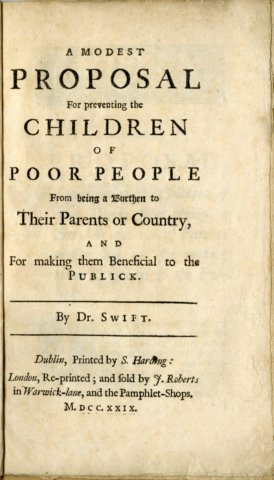
The Irish potato famine was man-made, not in the sense of a genetic accident, but as a policy calculated to control a conquered population, as lampooned in Jonathan Swift’s A Modest Proposal. The Irish potato famine did not occur in a vacuum. The potato blight “incidentally” caused the starvation of a poor, native peasantry who were only allowed to subsist on the economic margins to service a healthy export agricultural market controlled by rich foreign landowners. That central fact, the bumper harvests of agricultural exports enriching the wealthy while the powerless starved, is more central to the true history than the featured circumstances of a potato blight “coincidentally” occasioned by endless monoculturation of one or a few original Peruvian potato varieties. History written by the victors does not feature this first fact, in conventional historical accounts of the “tragedy”.
A 20th century monopoly/cartel controlled by Prussian Junckers invented an industrial process, the Haber-Bosch Nitrogen Fixation Process, making fertilizer out of air. But they mainly used it to make gunpowder, meanwhile, starving their native peasantry while diverting the land’s natural produce to the export market.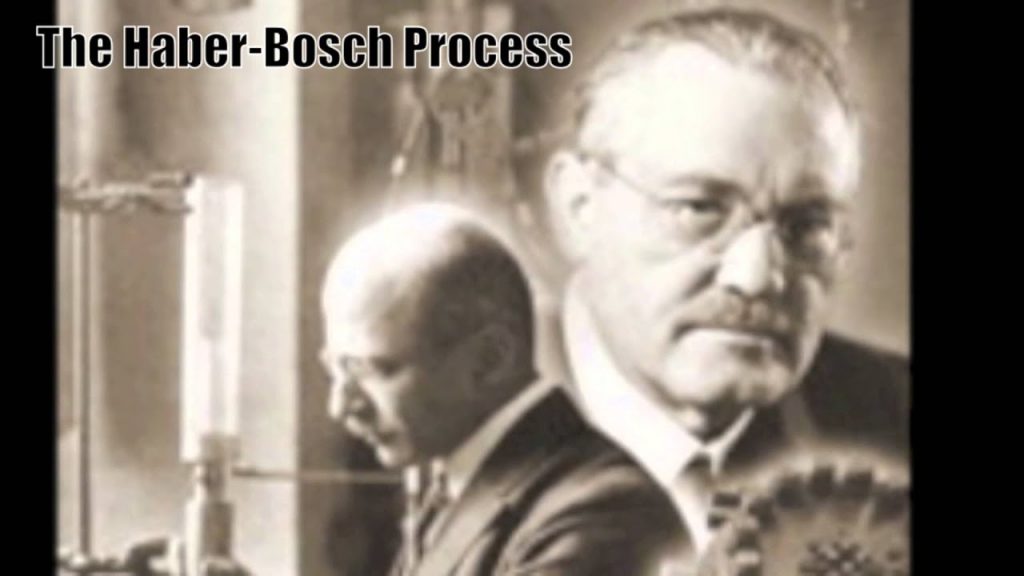
The 20th century famine in India, the Bengal Famine of 1943 with an estimated death toll 2-3 million, which is laid at the doorstep of Winston Churchill’s policy of neglecting to relieve the starving Indians while ensuring there was no disruption in grain exports from Australia to the more distant Europe, was preceded by one in the 18th century, the Great Bengal Famine of 1770 with a death toll of between 1 and 10 million, which was exacerbated by exploitative tax revenue policies of the East India Company after 1765 which crippled the economic resources of the rural population, influencing the course of the American Revolution, as Colonists saw how London exploited its colonies.
(Thomas Malthus’ “population-geometric, agricultural-produce arithmetic” argument, obviated by Norman Borland’s Green Revolution in the 1960s, was made in an internal East India Company, technical journal. Malthus was an heir to the Wedgwood Ceramics fortune, as were Charles Darwin and Francis Galton. The implicit policy declaration in Malthus’ work, places him squarely in the elite control cockpit of the better classes seeking to control the unwashed masses.)
It may be found that, after the initial, late Renaissance, English enclosure of common lands, most world famines were controlled by men, they were not natural.
Thus, the Agricultural Revolution–the potential to increase mercy for the poor–as the first level of the resurgent Tower of Babel, shows only the greed of men, as they turn a world tainted by evil, ever more into a living hell.
The Manufacturing Revolution is concerned, after people’s primary nutritional needs, with their other material needs. The pattern of subsistence farming prior to the monetization of everything in the age of monopolistic financial capitalism, was that there was no money, virtually all the implements that a farm family used they made themselves, including the products of the blacksmith’s forge. The small amount of trade that was necessary took place in the agora of barter. Our late 19th century, American forbears, prior to forced industrialization from 1880-1920, regarded it as dishonest to buy things one didn’t need–and didn’t want, and couldn’t afford, the unholy trinity of sales marketing–our ancestors only needed 4 months of schooling to read modest classics and calculate countable transactions, and from the age of young adulthood, 13, they were expected to attain self-employement–in the absence of a money economy. This trend, more central to fundamental human nature, was echoed in the remote past, in the fact that, prior to the rise of commercial classes in the European Renaissance, traders were considered virtually a criminal class, market centers were legally suppressed, all subsistence activities were centered, without money, on the manor house or the monastery.
The cyclical agrarian-agricultural pattern of idle time between sowing seed during one short time of the year, later punctuated by the intensive harvest season, left long stretches of agriculturally-idle time. Then farmers used those off-seasons to engage in the pursuit of their culture, both leisure-time pursuit of traditional non-monetizable, cultural, spiritual and oral intellectual lore, largely in verse and song, and home material artifact craft manufacture. Non-monetary barter only generally occurred at the margins of this rich life with much more leisure time than enjoyed by wage-slaves of the financial-capital ruled, contemporary era.
As a child I was taught by a California State textbook that the defect of the cottage industries was their “inefficiency”, seeming a self-confirming observation, but only in relation to the money economy. As long as home manufacturers could engage in peripheral barter trade in the absence of money, with other home manufacturers for skilled-craft products beyond their ordinary ability to manufacture, they enjoyed freedom that would be illusory to later wage slaves of the industrial revolution.
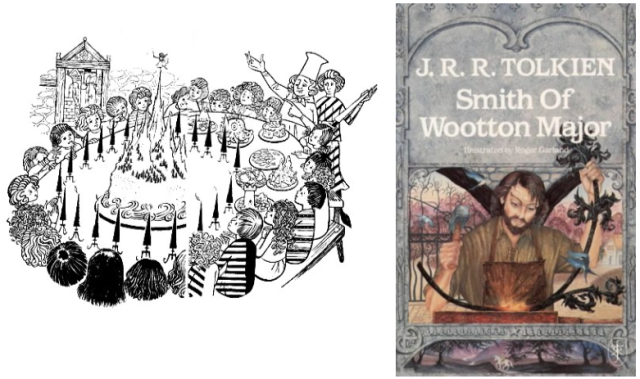
I heard a radio article about a Yankee farmer who kept a daily diary, with short, terse entries, about his farm tasks, during a 20 year period, from 1775-1795. If the farmer was making and repairing barrels, he would be called a cooper, if he was repairing wagon wheels, he would be a wheelright, if he was at the forge, he would be a blacksmith. “Jack of all trades, but master of none”? He was master of his own time. If Wall St. could force the man off his property, guarantor of his autonomy, he might have been given a tradesman’s name, in the case of the Yankee farmer in question, of any of 200 different trades, by the estimate of the researcher who studied his journal.
The independence of workers of cottager industries ended when they were compelled by the financial power to engage in the money trade, receiving raw materials in a single, specialized craft, from an industrial capitalist, then selling their home manufacture product back to the same industrial trade manager at a serious disadvantage. As new manufacturing techniques put home weaving at a monetary disadvantage, the cottagers were swept off their land, often because of taking out usurious loans at “the company store” to cover temporary shortfalls which became permanent, even inheritable from ancestors long-dead. The free peasants and craftsmen were thus ushered into the civil hell of the industrial revolutionary factory drudge.
The Information Revolution was spawned in the era in which, to keep laborers under control, it was illegal to educate them to anything approaching their ancestors’ relatively high cultural level during the feudal-manorial-monastic period, the time when the great Gothic cathedrals had been raised by anonymous artisans of non-elite class. It was seriously advocated in the British Parliament that manufacturing product in excess of the quantity bearable by the export trade, and domestically unaffordable by the grandchildren of cottager craftsmen, the workers themselves, be burned on the docks, to ensure an endless demand for work, to guarantee social peace, “keep them profitably occupied” under the industrial tyranny.
The information revolution is not best merely described as a choice between truth or lies, but as a continuous spectrum ranging from The Truth (Who is Jesus Christ), to the merely plausible, the gratuitously pleasing (pandering to slaves of passion), the delusive, the worthless (junk-disinformation), that which is outright falsehood, the harmful, the poisonous. The traditional cultural legacy of the slave descendants of free peasants must be supplanted by “news” regulated by newspapers which issued a very narrow flow of information and disinformation heavily slanted in their owners’ interest, the printing-press as a kind of spiritual-intellectual power-loom of the industrialization of the human soul. This context was described by Father Brown mystery author, G.K. Chesterton in The Man Who Knew Too Much character of news-and-politics insider, Horne Fisher, a predecessor of Winston Smith of George Orwell’s 1984.
The co-inventor with Newton of calculus, Leibnitz, described the glut of information poor books 250 years after Guternberg’s 1448 invention of the printing press, the environment which Cervantes lampooned in Don Quixote:

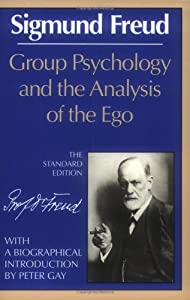
For a century or more, a hidden information sector has exercised a high level of control over public thinking, so that it is accurately termed by its proprietors the craft of consent engineering. The thought-control sector’s dominance was presaged by the Prussian dark-psychologist Wilhelm Wundt, its essential theory was devised by Sigmund Freud in a book of theory on mass manipulation.
The basic story is that populations who lost their traditional heritage and were thrust naked into modern life, spontaneously fell into a collective addiction by the allure of adhering together in mass groups. The unconscious group animal felt a certain surge of power, even it was subject to the group fear of powerlessness, fear of undirected anarchy, in the absence of a leader with messianic vision who can be believed. The manipulators discovered an unconscious, mass behavior pattern, that if the group could identify a scapegoat, they attained a temporary catharsis, an escape from fearfulness and surge of power-feeling, from punishing the judas-goat figure. This mass-unconscious behavior was able to be harnessed by the manipulators, planted, propagated and harvested, for sale to the top bidders.
Thus was born the industry of mass thought-formation, the products of which could be offered up, wholesale, to the controlling oligarchs of the Western world. (The controllers of Eastern, messianic-secular-humanist atheism, Stalin, Mao and at a smaller scale, Hitler, took more personal charge of this same control mechanism as their main lever of power, without direct contact with the Western controllers. The principles of control could be conveyed through academic research, , agnostic of the superficial East-West dichotomy/divide.)
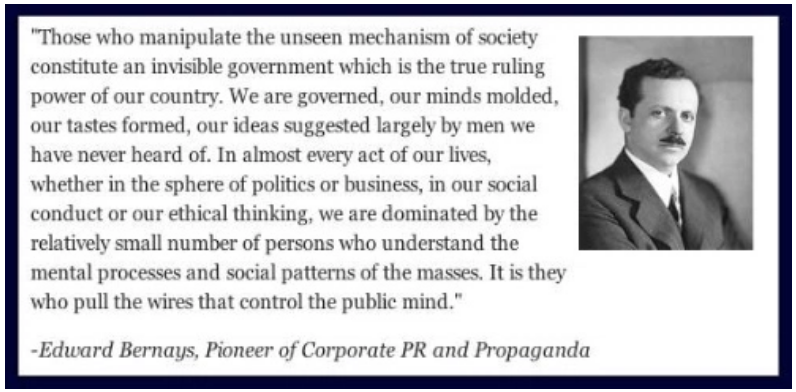 Freud’s nephew Edward Bernays, employed by a tobacco company, broke the legal boycott on women smoking, by having his secretary parade smoking a cigarette on a New York sidewalk on Easter 1929 with his lawyer, press photographers strategically invited to the event, to get deliberately arrested, as “brave pioneers of female emancipation”, in his campaign of commercial-political control, “Torches of Freedom”, an early, successful example of astro-turf, phony “grassroots” political agitation for mass control. This campaign’s later echoes were found in the Virginia Slims cigarettes ad-slogan “you’ve come a long way, Baby”.
Freud’s nephew Edward Bernays, employed by a tobacco company, broke the legal boycott on women smoking, by having his secretary parade smoking a cigarette on a New York sidewalk on Easter 1929 with his lawyer, press photographers strategically invited to the event, to get deliberately arrested, as “brave pioneers of female emancipation”, in his campaign of commercial-political control, “Torches of Freedom”, an early, successful example of astro-turf, phony “grassroots” political agitation for mass control. This campaign’s later echoes were found in the Virginia Slims cigarettes ad-slogan “you’ve come a long way, Baby”.
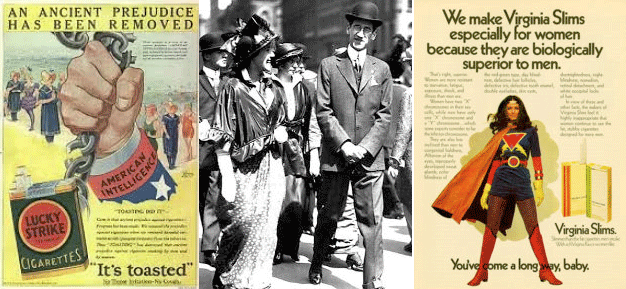
Mass opinion programming using the irresistible control levers of advertising is ethically agnostic, able to be used for weal or for woe-–if you’re over 50 and you find yourself always picking up trash, you probably never think about the single tear dropping from the eye of Chief Iron Eyes Cody, which was used to program your behavior for a beneficial effect.
But it is the shrewd children of this world who have used the nearly completely unconscious leverage of the secret craft of persuasion at the behests of the superiors, the several thousand billionaire oligarch masters of the universe.
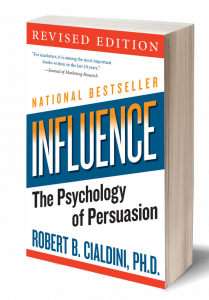
Nowadays the scandal of worthless “scientific” studies reverse-engineering truth through indiscriminately applied deductive “reasoning” is lethally manifest by the violently conflicting epidemiological policies about Covid19. A crisis has developed that fractures the foundation of the castle of civilization, making parts of the house strive against each other with inevitable the fall of the whole edifice back into a new dark ages of institutionalized lies, violence and tyranny. The crisis is evident in allegedly “objective” studies which are designed not to discover truth but to get people to believe some particular falsehood or another, from some position that turns out to be random in a spectrum of arbitrary unrealities, none of which are any closer to the Objective Truth Which was before and will remain after this age has destroyed itself.
The fourth level of the resurgent tower of Babel is too close to us historically, its unfolding is too dynamically on-going for us to have a very clear view of it; but its effects are so severe, we must try to study it, necessarily in relation to the more-nearly normal recent past, only a century ago and extending back..
In my craft-area, music, it was predicted in George Orwell’s 1984 that there would be machines to compose popular music for the “happy”, enslaved proletarians. This prediction suddenly came true a decade later with Neil Sedaka’s programmed composition of Breaking Up Is Hard to Do –after leaving one semester at Juliard, Sedaka learned in independent studies in pursuit of confecting a manufactured “hit” that the secret is to construct lyrics rhyming with vowels at the ends of lines.
I beg of you don’t say goodbye.
Can’t we give our love another try?
Come on, baby, let’s start anew
‘Cause breaking up is hard to do
Now there is an algorithm-powered machine which uses facial-recognition to initially classify listeners by age, ethnic-culture and class categories, observes their emotional reactions to song samples, monitors their heart-rate, pupil dilation and other machine-readable vital statistics, quickly sorts through listeners’ reaction to selected music samples, and can accurately formulate a customized, Pandora-type playlist in 90 seconds. Human culture as a machine extension, a data-layer in an algorithm.
Today, the corrosive effects of consciousness emulation by electronic technologies, artificial algorithms emulating nearly to the point of extinction, our once-original activity, are threatening to dispense entirely with our own involvement, as they enslave us into device-dependent thralldom. (Computers will always be able to flawlessly perform feats of mere technical prowess much more efficiently than humans, but computers are only soulless shells, never able to originate creative works under the inspiration of the Holy Ghost–but computers can be made to enslave humans with indolence and lower their gaze from the stars, pedaling narcotic divertissements denatured at their core of spiritual essence.)
We have been rendered as cultureless automatons, because we don’t practice culture, we merely consume with indifference the “content” of past ages which did actively practice culture, allowing our receptors of active culture to be deceived with ersatz quasi-cultural glitz.
Common people prior to the displacement of active culture by the passive consumption of radio & talkies, had the customary, frequent habit of singing popular, folk and classically-informed home music. (Middlebrow culture, modestly informed by high culture.) Simply stated, before radio, if you wanted music, you “had” to make it, and most people, except the deaf and tone-deaf, did with unforced enthusiasm, having fun “doing it themselves” in a way school conditioning makes impossible today. In the decade prior to the end of World War One, there were 300 piano brands in the U.S. alone, annually there were an average of ten million-selling sheet music issues, the average person could, and did, sing the lyrics to 200 songs, in three or four parts. Whereas, even highly cultivated aficionados today of some particular music specialty are not known to crack their voice with a single song, for decades of their lives.
This shortlink
http://www.sing-prayer.org/p/440